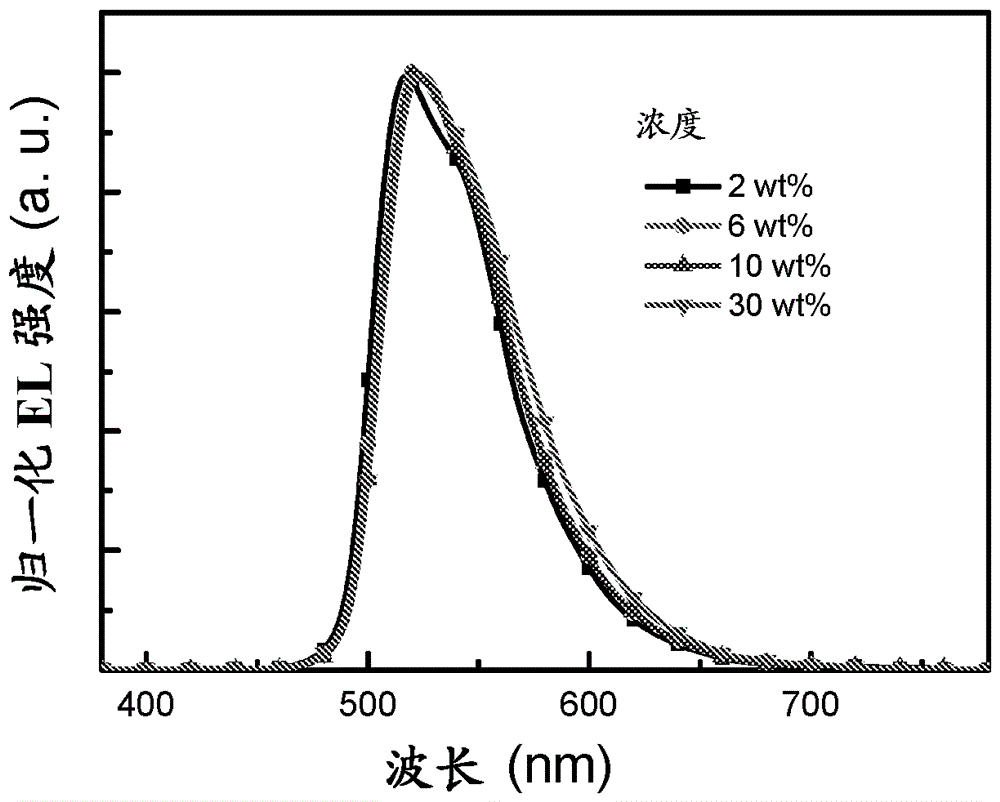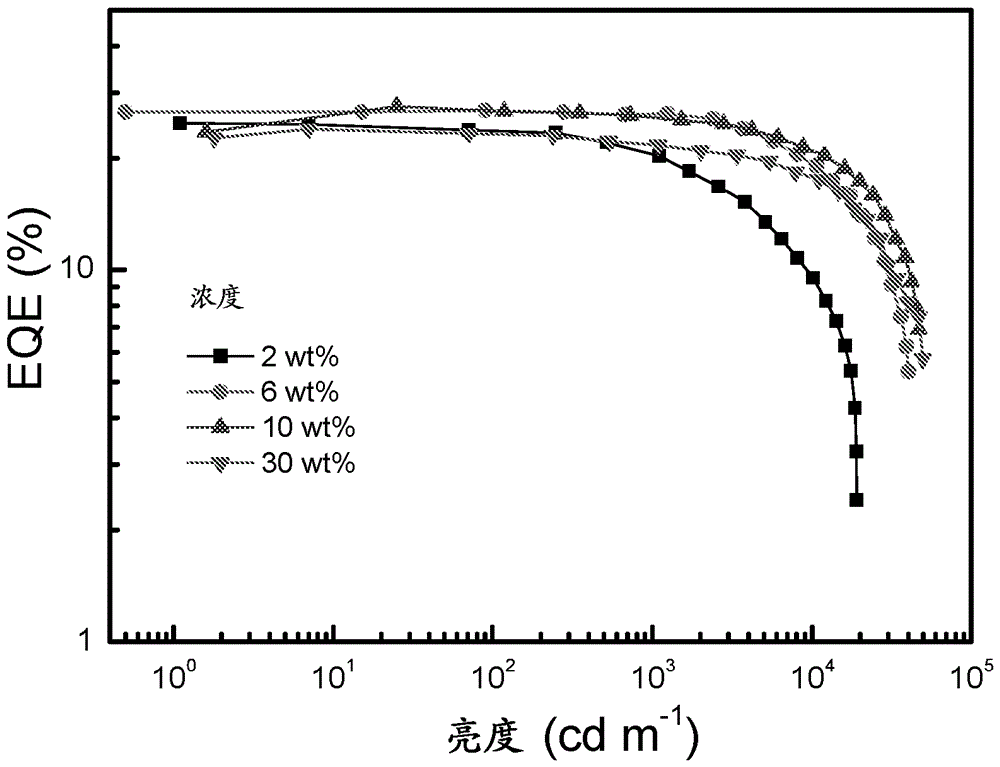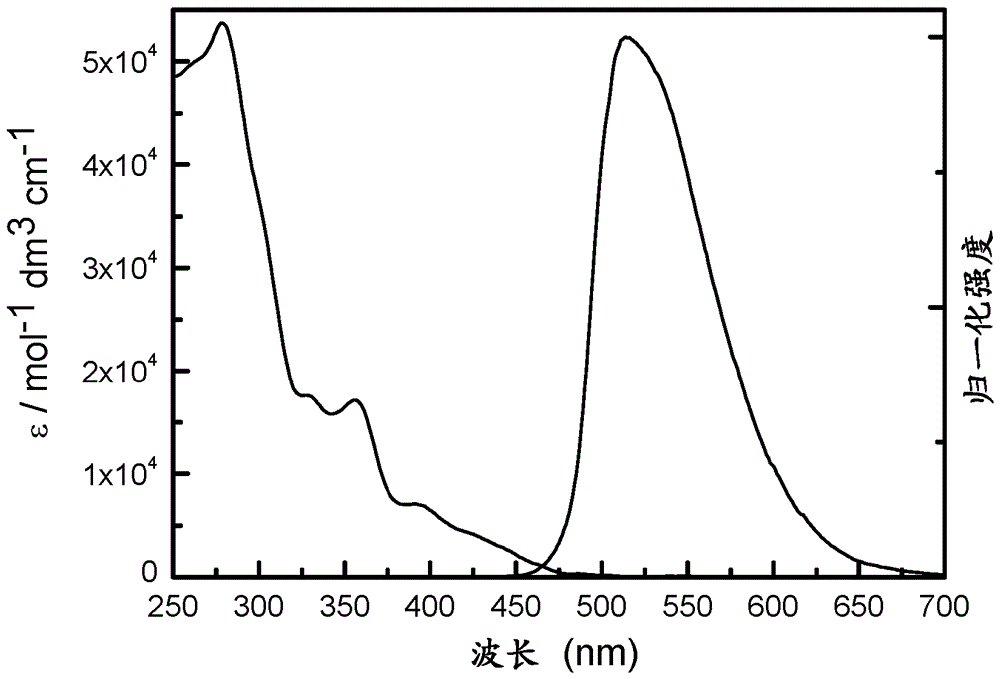Platinum (II) emitters for OLED applications
A technology of emitters and light-emitting devices, which is applied in the direction of light-emitting materials, electric solid-state devices, semiconductor devices, etc., and can solve the problems of only reaching the maximum efficiency and high quenching constant
- Summary
- Abstract
- Description
- Claims
- Application Information
AI Technical Summary
Problems solved by technology
Method used
Image
Examples
Embodiment 1
[0113] Example 1 - Synthesis of Intermediate 3102:
[0114]
[0115] To a solution of magnesium (3.3 g, 137 mmol, 1.2 equiv.) and 40 mL of anhydrous diethyl ether was slowly added starting material 511 (41.5 mL, 137 mmol, 1.2 equiv.) through a dropping funnel under nitrogen atmosphere. Intermediate 3101 was produced after stirring at reflux for 3 hours and was used without further purification.
Embodiment 2
[0116] Example 2 - Synthesis of Intermediate 3202:
[0117]
[0118] To a solution of starting material 5202 (30.0 g, 114 mmol, 1.0 equiv.) in anhydrous THF (30 mL) was added Intermediate 3102 slowly at room temperature under nitrogen atmosphere. After complete addition, the reaction mixture was stirred at reflux for 12 hours. Pour the mixture into a solution containing 5 mL concentrated H 2 SO 4 , 5 mL of acetic anhydride and 90 mL of acetic acid. The reaction mixture was stirred at 150°C for 6 hours. The mixture was poured into methanol. After filtration and washing twice with cold methanol, intermediate 3202 was obtained as a light brown solid (29.0 g, 65%).
[0119]
[0120]
Embodiment 3
[0121] Example 3 - Synthesis of Intermediate 3302:
[0122]
[0123] Intermediate 3302 was synthesized using Stille coupling. Intermediate 3302 (29.0g, 72.8mmol, 1.0equiv.), bis(triphenylphosphine) palladium(II) dichloride (5.1g, 7.2mmol, 10mol%) and 80mL anhydrous toluene were prepared under nitrogen atmosphere. To the solution was added 1-ethoxyvinyltributylstannane (39.3 mL, 101.9 mmol, 1.4 equiv.). The reaction mixture was refluxed for 24 hours. After cooling, HCl (100 mL, 12M) was poured into the mixture and extracted with dichloromethane (3x50 mL). with H 2 The combined organic layers were washed with O (3x100mL) and washed with MgSO 4 dry. The solvent was removed under reduced pressure using ethyl acetate / hexane mixture (1:9) as eluent on SiO 2 The crude compound was purified by column chromatography to afford Intermediate 3302 as a pale yellow solid (17.1 g, 66%).
[0124]
[0125]
PUM
| Property | Measurement | Unit |
|---|---|---|
| luminance | aaaaa | aaaaa |
Abstract
Description
Claims
Application Information
 Login to View More
Login to View More - R&D
- Intellectual Property
- Life Sciences
- Materials
- Tech Scout
- Unparalleled Data Quality
- Higher Quality Content
- 60% Fewer Hallucinations
Browse by: Latest US Patents, China's latest patents, Technical Efficacy Thesaurus, Application Domain, Technology Topic, Popular Technical Reports.
© 2025 PatSnap. All rights reserved.Legal|Privacy policy|Modern Slavery Act Transparency Statement|Sitemap|About US| Contact US: help@patsnap.com



